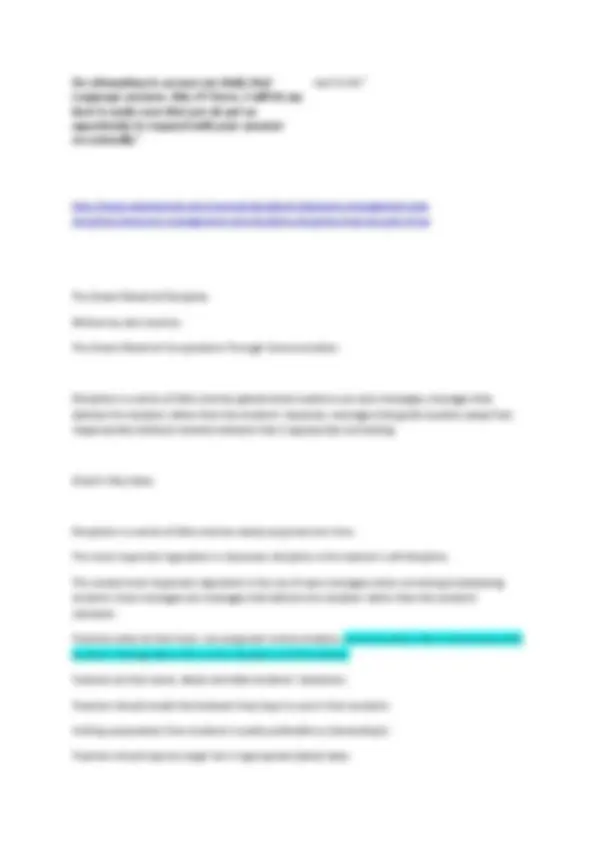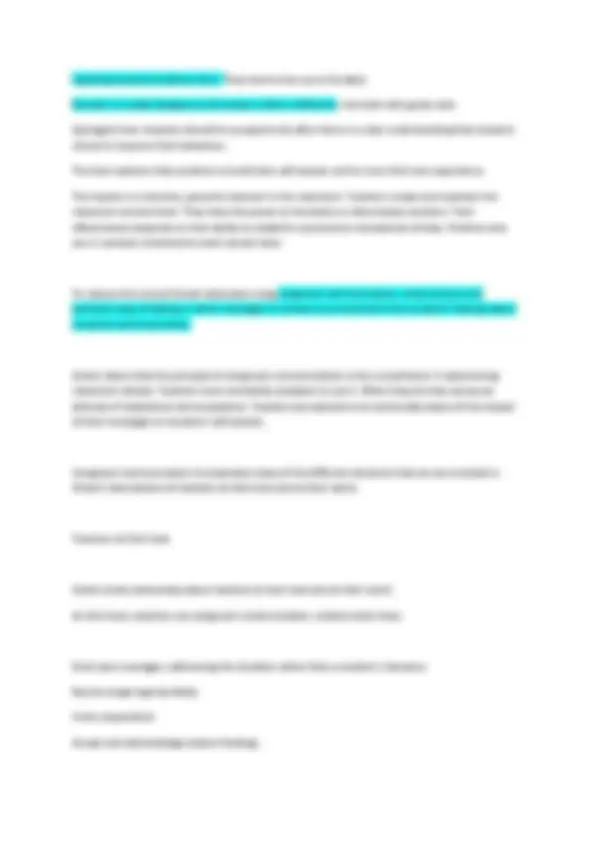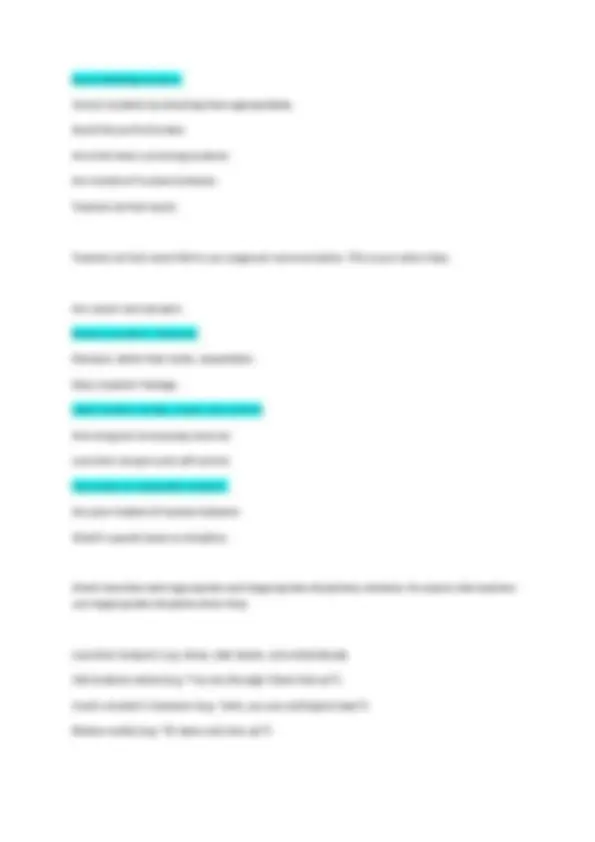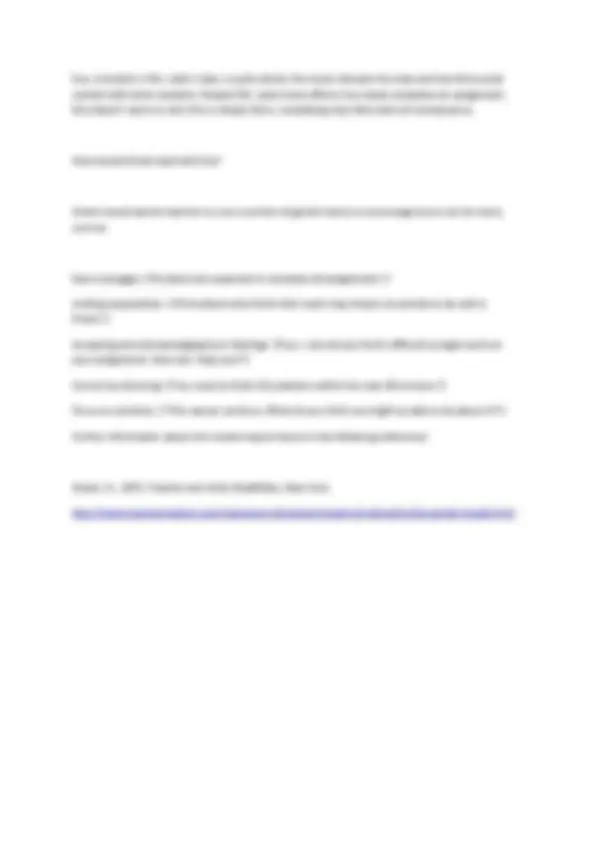






Study with the several resources on Docsity

Earn points by helping other students or get them with a premium plan


Prepare for your exams
Study with the several resources on Docsity

Earn points to download
Earn points by helping other students or get them with a premium plan
Community
Ask the community for help and clear up your study doubts
Discover the best universities in your country according to Docsity users
Free resources
Download our free guides on studying techniques, anxiety management strategies, and thesis advice from Docsity tutors
The Ginott Model in describes maintain positive classroom disciplines, ginott key ideas, congruent and non-congruent communication strengths.
Typology: Lecture notes
1 / 8

This page cannot be seen from the preview
Don't miss anything!





The Ginott Model Haim Ginott was a clinical psychologist and child therapist of the 1960’s and 1970’s. Ginott, author of several books on child psychology, is regarded as one of the leaders in controlling the behaviors of children. Ginott emphasized that parents needed to limit the unacceptable behaviors of children but, at the same time, safeguard and protect the children’s feelings and emotional well-being. The major theme of the Ginott model is that the overall classroom atmosphere should be dealt with, not individual behavior problems. To that end, teachers should address the class personally, using "I" statements. According to Ginott, “Congruent Communication" should be used with students, which basically means dealing with students using non-aggressive language. Children’s self-esteem is greatly affected by their interaction with adults. Listed below are four of Ginott’s axioms relating to how teachers can establish and maintain positive classroom discipline.
capable of making good decisions. Congruent communication invites cooperation, expresses anger appropriately and uses appreciative rather than evaluative praise. Chart 2: Examples of Congruent and Non-Congruent Communications Congruent Communication Strengths Non-Congruent Communication Strengths Addresses the student’s action rather than the student’s character. “ The class moves along much better, Terry, when you raise your hand and I call on you.” This type of communication allows and even emphasizes name calling and labels. “ Don’t act like a clown when you walk up the hall knocking on each door Gary.” Invites cooperation between the teacher and student. “ Devin, would you please take our new student to the restroom? I would, but I am expecting his mother for a conference.” It denies students’ feelings and attacks the character of students. “ Greg, you have yet to complete one assignment this week! Yet, you must spend a great deal of time coming up with these lame excuses. If you spent more time on your assignments and less time trying to get out of them, you would be a much more productive student.” Congruent communication accepts and acknowledges the feelings of both students and teachers. “ I realize, Martha, that you would prefer not to speak at the graduation. However, your parents would be so disappointed if you let this opportunity pass by. You one day would also feel terrible about not seizing the opportunity.” Demands rather than invites cooperation “Lee Ann, you will complete the assignments tonight. Better yet, I think I will have you stay in during your recess period so that you can get a good start.” Congruent communication uses brevity in correcting misbehavior “ Stacy, please put that away.” Shows students that the teacher can not maintain their own temper – and therefore why should they? “ I am getting sick and tired of the noise in this room. Every day I remind you of the classroom rules, yet every day is the same thing. I have to yell and holler at this class to get them quiet enough so that two or three of you can perhaps learn something.” Expresses anger appropriately. “ Victor, I am sorry that your aunt felt that I was mistreating you. I do not remember ever calling you down Invades students’ privacy “ David, come here for a minute. I need to look in your backpack. Andy’s toy has disappeared and your desk is